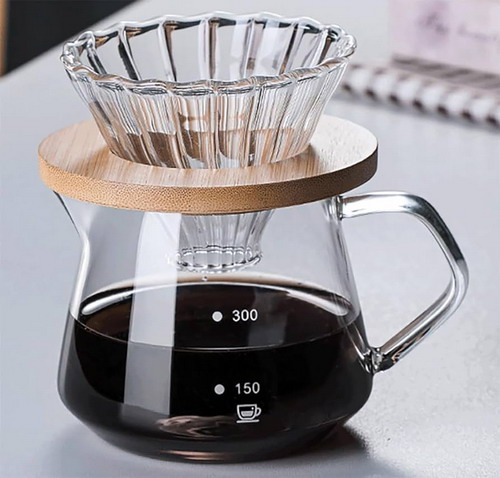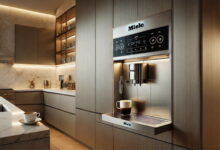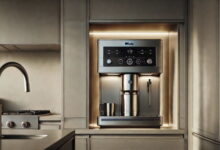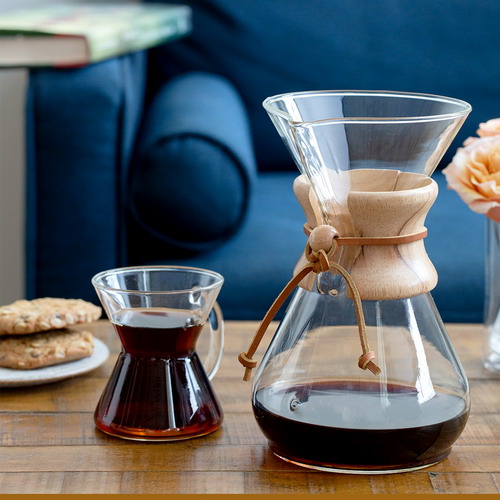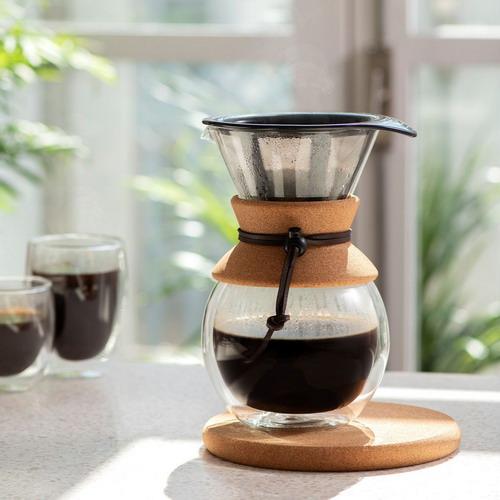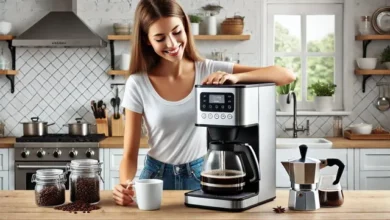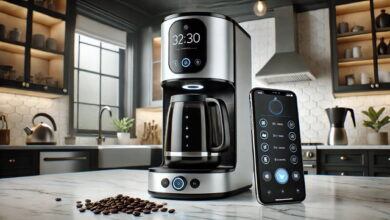Best Pour Over Coffee Makers In 2025
In recent years, the pour-over coffee method has surged in popularity, captivating coffee enthusiasts worldwide with its simplicity and elegance. For those who cherish the art of brewing, the pour-over method offers a hands-on experience that brings out the best flavors in your favorite beans. But what exactly is pour-over coffee, and why has it become the preferred brewing method for so many?
Pour-over coffee involves manually pouring hot water over coffee grounds in a filter, allowing the water to slowly extract the coffee’s flavors as it drips into a carafe or mug below. This method is favored for its ability to produce a clean, crisp cup of coffee that highlights the unique characteristics of the beans. Unlike automated drip coffee makers, the pour-over technique gives you full control over factors like water temperature and brewing time, making it a favorite among those who seek a personalized brewing experience.
In this article, we aim to guide you through the journey of finding the best pour-over coffee maker. Whether you’re a seasoned barista or a curious newcomer to the world of coffee, we’ll explore the top choices available, helping you make an informed decision to elevate your home brewing game. Join me as we delve into the world of pour-over coffee makers and discover which one is right for you.
What is a Pour-Over Coffee Maker?
A pour-over coffee maker is a manual coffee brewing device designed to give you full control over the extraction process, allowing you to create a rich, flavorful cup of coffee. Unlike automatic coffee machines, pour-over brewers require you to pour hot water over coffee grounds manually, making it an interactive and rewarding experience.
The pour-over method has its roots in Japan, dating back to the early 1900s when the first ceramic dripper was invented by Melitta Bentz, a German housewife seeking a better way to make coffee. This method quickly gained popularity in Japan and spread globally due to its simplicity and the high-quality coffee it produces.
Using a pour-over coffee maker involves placing a paper or metal filter in the dripper, adding freshly ground coffee, and then pouring hot water over the grounds in a slow, circular motion. This process allows you to control the water temperature, flow rate, and brew time, leading to a more precise extraction. The result is a clean, aromatic cup of coffee that showcases the unique flavors and characteristics of the beans.
Benefits of Using a Pour-Over Coffee Maker
There’s something incredibly satisfying about the ritual of making pour-over coffee. It’s not just about the caffeine kick; it’s about the entire experience and the unparalleled benefits that come with it. Let’s dive into why a pour-over coffee maker might just be your best brewing companion.
Flavor
One of the standout features of pour-over coffee is its flavor. Unlike other brewing methods, pour-over allows the true character of the coffee beans to shine. The slower extraction process results in a cleaner, more complex flavor profile, highlighting subtle notes that might be lost in other brewing methods. When I first tried pour-over coffee, I was blown away by the distinct layers of flavor in a single cup. It was like tasting coffee for the first time again.
Control
Pour-over coffee grants you ultimate control over your brew. From the grind size and brewing time to the temperature and coffee-to-water ratio, every variable is in your hands. This level of precision means you can tweak and perfect your brew to suit your taste preferences. I remember the countless mornings spent experimenting with different techniques, feeling like a barista in my own kitchen, each attempt bringing me closer to the perfect cup.
Simplicity
Despite the control it offers, the pour-over method is delightfully simple. The equipment required is minimal—a dripper, filter, kettle, and your favorite coffee beans. This simplicity not only makes the process straightforward but also ensures that your kitchen isn’t cluttered with gadgets. The minimalistic nature of pour-over brewing is part of its charm, allowing you to focus on the essentials and the joy of brewing.
Sustainability
For those of us who are environmentally conscious, pour-over coffee is a great choice. Many pour-over systems use reusable metal or cloth filters, significantly reducing waste compared to single-use paper filters or plastic coffee pods. This eco-friendly aspect was a significant factor in my switch to pour-over coffee, knowing that my daily ritual was having a minimal impact on the environment.
Key Features to Look for in a Pour-Over Coffee Maker
When selecting a pour-over coffee maker, several key features can significantly impact your brewing experience. First, the material of the coffee maker plays a crucial role. Ceramic and glass models are aesthetically pleasing and excellent at maintaining temperature, but they can be fragile. Stainless steel offers durability and retains heat well, though it might impart a slight metallic taste. Plastic pour-over makers are lightweight and virtually unbreakable, but they can sometimes affect the flavor of your coffee.
Design is another vital consideration. A well-designed pour-over coffee maker should have a comfortable handle, a precise spout for controlled pouring, and overall ergonomic features that make the brewing process enjoyable. Look for a model with a spout that allows for a steady and consistent flow of water, which is essential for even extraction.
Size and capacity are also important factors. If you’re brewing for one, a single-cup pour-over might suffice. However, for families or frequent gatherings, a larger capacity model would be more practical. Consider how much coffee you typically drink and choose accordingly to avoid under or over brewing.
The type of filter you use can also affect the flavor and clarity of your coffee. Paper filters are popular for their clean taste and ease of disposal, but they can be wasteful and expensive over time. Metal filters, on the other hand, are reusable and allow more oils and flavors to pass through, resulting in a richer brew. Cloth filters offer a middle ground, providing a clean cup while being reusable, though they require more maintenance.
Lastly, brand reputation should not be overlooked. Investing in a pour-over coffee maker from a reputable brand ensures quality, durability, and often, better customer support. Brands with a solid reputation in the coffee industry are likely to have put their products through rigorous testing to ensure they deliver a superior brewing experience.
Top 5 Best Pour-Over Coffee Makers
Pour-over coffee is an art form, and choosing the right coffee maker can elevate your brewing experience to new heights. As I delved into the world of pour-over coffee makers, I was thrilled to discover the nuances each model brings to the table. Here are my top five recommendations, each carefully selected based on features, user reviews, and my own experience as a coffee enthusiast.
Coffee Maker 1: Hario V60
- Brand and Model: Hario V60
- Features: The Hario V60 is renowned for its unique spiral ridges and a large single hole at the bottom, which allows for precise control over the brewing time and water flow.
- Pros and Cons:
- Pros: Affordable, easy to use, and widely available. The design allows for excellent control over the extraction process.
- Cons: Requires a good technique to master; beginners might need some practice.
- User Reviews: Users rave about the clean, crisp flavor it produces. Many appreciate its simple yet effective design, though some note the learning curve involved in perfecting their pour-over technique.
Coffee Maker 2: Chemex Classic Series
- Brand and Model: Chemex Classic Series
- Features: This iconic coffee maker boasts a timeless design and a thick paper filter that removes most of the coffee oils, resulting in a cleaner cup.
- Pros and Cons:
- Pros: Elegant design, produces a smooth and clean coffee, doubles as a stylish carafe.
- Cons: More expensive than other models, the thick filters can be hard to find at times.
- User Reviews: Many users adore the Chemex for its aesthetic appeal and the clarity of the coffee it brews. However, some mention that it can be fragile and cumbersome to clean.
Coffee Maker 3: Kalita Wave
- Brand and Model: Kalita Wave
- Features: Featuring a flat-bottomed dripper with wave-like filters, the Kalita Wave promotes even extraction and consistent brews.
- Pros and Cons:
- Pros: Consistent and forgiving in terms of brew technique, compact and durable design.
- Cons: Filters can be pricey and less accessible, smaller capacity compared to others.
- User Reviews: Users appreciate its consistency and ease of use, making it a favorite for both beginners and seasoned brewers. The availability of filters, however, is a common gripe.
Coffee Maker 4: Bodum Pour Over Coffee Maker
- Brand and Model: Bodum Pour Over Coffee Maker
- Features: Equipped with a permanent stainless steel filter, this coffee maker is eco-friendly and eliminates the need for paper filters.
- Pros and Cons:
- Pros: Environmentally friendly, straightforward design, affordable.
- Cons: The stainless steel filter may allow more oils and fine grounds into the cup, affecting the clarity of the coffee.
- User Reviews: Users like the Bodum for its sustainability and ease of use. However, some prefer paper filters for a cleaner cup and note that it requires regular cleaning to maintain performance.
Coffee Maker 5: Melitta Ready Set Joe
- Brand and Model: Melitta Ready Set Joe
- Features: This budget-friendly pour-over coffee maker includes a plastic cone and a starter pack of filters, perfect for beginners.
- Pros and Cons:
- Pros: Very affordable, easy to use, and portable.
- Cons: Made of plastic, which might not appeal to everyone; filters can be difficult to find.
- User Reviews: Users love its affordability and simplicity, making it an excellent entry point into the world of pour-over coffee. Some, however, wish it were made of more durable materials.
How to Choose the Right Pour-Over Coffee Maker for You
Choosing the right pour-over coffee maker can be an exciting yet daunting task. Your personal preferences play a crucial role in this decision. Consider what you enjoy most about coffee. Are you a fan of rich, full-bodied brews, or do you prefer a lighter, more delicate cup? Your brewing habits are just as important. If you love experimenting with different brewing techniques, a more versatile and adjustable pour-over system might be the best fit.
Budget is another key factor. Pour-over coffee makers come in a wide range of prices. At the lower end, around $20-$30, you can find reliable and straightforward models that are perfect for beginners. Mid-range options, priced between $50-$100, often offer better build quality and additional features like flow control. High-end models, which can cost upwards of $200, are typically made of premium materials and may include advanced features that provide greater control over the brewing process. Knowing what to expect in each price range can help you find a pour-over coffee maker that fits both your needs and your budget.
Usage frequency is something to think about, too. If you plan to use your coffee maker daily, investing in a durable and easy-to-clean model is wise. On the other hand, if you brew occasionally, a more basic model might suffice. Portability could also influence your choice. If you often travel or need a coffee maker for your office, look for compact and lightweight options that are easy to pack and carry.
Tips for Brewing the Perfect Pour-Over Coffee
Brewing the perfect pour-over coffee is an art that starts with selecting high-quality beans. Fresh, specialty-grade beans will significantly impact the flavor of your coffee, offering complex and vibrant tastes that supermarket brands can’t match. Grind size is equally important. A medium-fine grind is generally ideal for pour-over coffee, allowing for optimal extraction without over-extracting or under-extracting the flavors.
Water temperature plays a critical role in the brewing process. The ideal range is between 195°F and 205°F (90°C – 96°C). Water that’s too hot can burn the coffee, while water that’s too cool won’t extract all the desirable flavors. Brewing time is another crucial factor. Aim for a total brew time of 2.5 to 4 minutes. This ensures a balanced extraction, giving your coffee a well-rounded flavor.
The pour technique is the final piece of the puzzle. Begin by blooming the coffee—pour just enough water to saturate the grounds and let it sit for 30-45 seconds. This releases carbon dioxide and prepares the coffee for full extraction. Then, pour the remaining water in slow, circular motions, maintaining a steady pace to ensure even extraction.
Conclusion
To recap, choosing the right pour-over coffee maker involves considering your personal preferences, budget, usage frequency, and portability needs. For brewing the perfect cup, focus on high-quality beans, the correct grind size, appropriate water temperature, optimal brewing time, and precise pouring technique. My personal favorite pour-over coffee maker is the Hario V60, as it offers a perfect balance of affordability, quality, and control.
Now it’s your turn. I encourage you to dive into the world of pour-over coffee and share your experiences. There’s nothing quite like the satisfaction of brewing a perfect cup of coffee by hand, and I can’t wait to hear about your journey. If you have any questions or need further tips, feel free to reach out. Happy brewing!
Additional Sections
Frequently Asked Questions (FAQs)
- What is the best grind size for pour-over coffee? A medium-fine grind is typically best for pour-over coffee.
- Can I use pre-ground coffee? While you can, freshly ground coffee is recommended for the best flavor.
- How important is water quality? Very important. Use filtered water to avoid any off-flavors.
Maintenance Tips for Your Pour-Over Coffee Maker
Regular cleaning is crucial for maintaining the quality of your brew. Rinse your coffee maker thoroughly after each use and occasionally clean it with a mixture of vinegar and water to remove any buildup.
Comparisons with Other Brewing Methods
- French Press: Offers a fuller body but less clarity compared to pour-over.
- Espresso: Delivers a stronger, more concentrated shot but requires specialized equipment.
- Drip Coffee: Convenient and consistent but lacks the hands-on control of pour-over.

